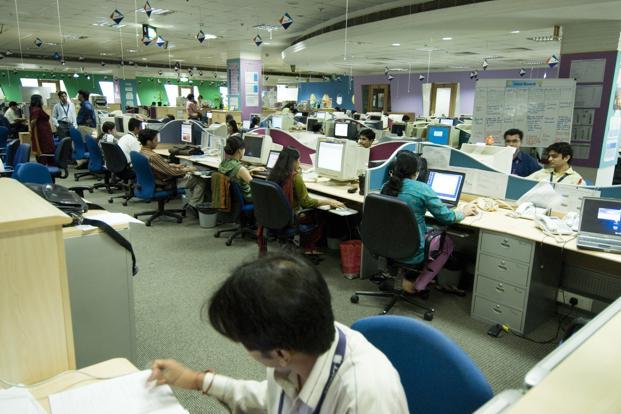TCS, Infosys, Wipro see decline in revenue per employee in FY16
The revenue per employee of Indian IT services firms declined over the last 12 months, even as Nasdaq-listed Cognizant Technology Solutions Corp. saw an increase in this important metric—a measure of efficiency as well as the kind of work a company does.
Cross-currency volatility, pricing pressure for outsourcing deals, and limited use of automation tools are three underlying reasons behind the decline of revenue per employee at three of India’s largest IT services firms, including Tata Consultancy Services Ltd (TCS), Infosys Ltd and Wipro Ltd. The three firms together generated more than $33.4 billion in revenue and employed 720,799 people at the end of March 2016.
TCS ended 2015-16 with a revenue per employee of $46,758, a decline of 3.29% compared to the year ago, largely on account of cross-currency fluctuation.
Although TCS reported a revenue growth of 11.9% in constant currency terms for the year ended March, its actual reported growth was only 7.1%.
India’s third largest software firm, Wipro, which reported a 3.7% growth in 2015-16, was hit by pricing pressure, according to a few equity analysts. Wipro’s revenue per employee declined 5.1% to $42,485.
Infosys, which under its first-non-founder chief executive officer Vishal Sikka has been most outspoken on improving revenue productivity by automating basic tasks which until now have been done by its engineers, too saw a marginal decline of 0.9% in revenue per employee to $48,963. A mix of cross-currency fluctuation and pricing pressure was the main reason behind this decline in revenue productivity.
“Automation will take time and, as of now, we are still very early in our journey,” Sikka said in a 15 April interview.
Experts agree with Sikka that most Indian IT firms are still figuring out how to use automation, and it will take at least a “few years” before any significant impact is seen.
Automation is happening in these companies in “very small pockets”, said a Mumbai-based analyst at a domestic brokerage who spoke on condition of anonymity. “Any significant impact can be visible only once a lot of projects, involving, say L0 (basic support work called Level Zero), have been automated. This is still a few years away.”
Infosys under Sikka has come out with its own metric to evaluate the productivity increase by measuring revenue per FTE (full-time equivalent). The FTE metric measures revenue generated by employees working on a project, unlike the traditional method of tracking revenue per employee that takes into account all employees, including engineers who are on a bench or undergoing training.
Infosys’s revenue per FTE declined to $50,700 at the end of March 2016, against $52,300 at the end of March 2015.
